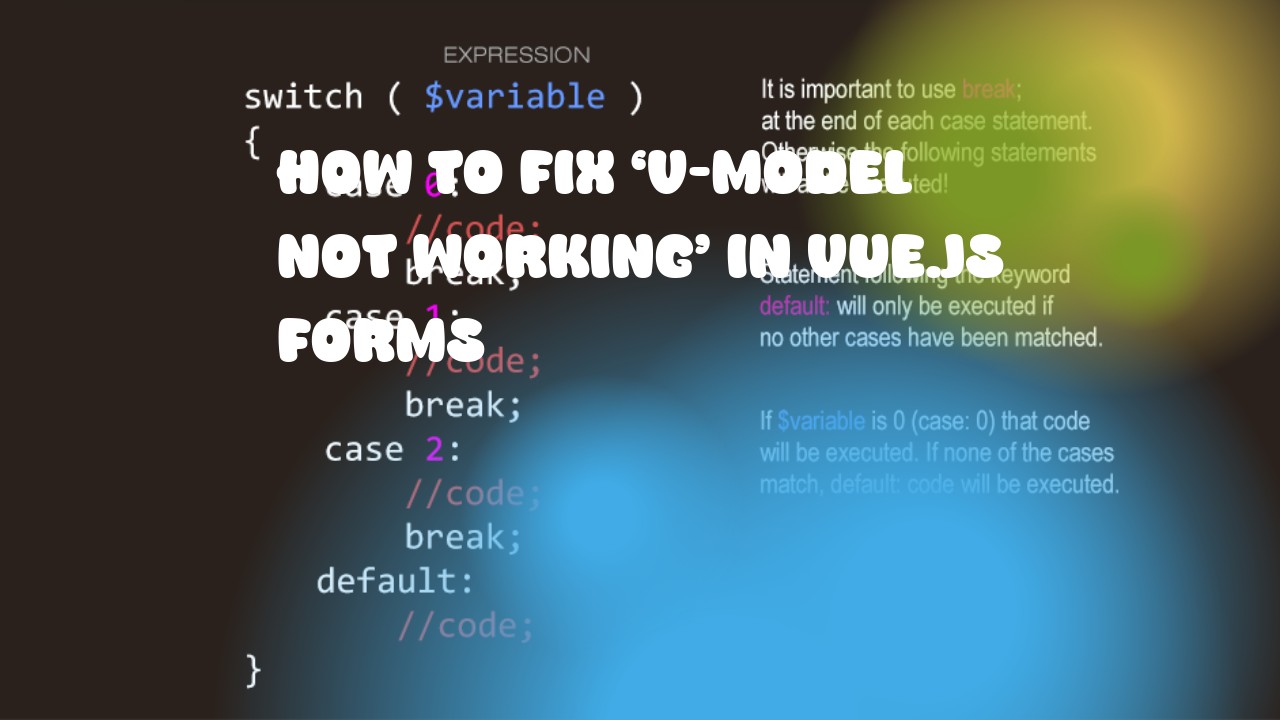'v-model' is a directive that allows you to create two-way data bindings on form input, textarea, and select elements. However, if it's not working as expected, it could be due to several reasons:
- Missing Data Binding: Ensure that the 'v-model' attribute is correctly bound to a data property in your Vue instance. For example:
<input v-model="message" />
should correspond to:
data() {
return {
message: ''
}
}
-
Invalid Syntax: Make sure that you don't have any syntax errors in your code, as this could cause the 'v-model' directive not to function properly.
-
Object or Array Binding: If you are binding to an object or array property, ensure that you use dot notation (.) or bracket notation ([]) instead of just providing the property name. For example, if you have a data object like this:
data() {
return {
user: {
name: ''
}
}
}
You would use 'v-model' as follows:
<input v-model="user.name" />
-
Element Type: The 'v-model' directive works with input elements, textarea, and select elements. Make sure that you are using these types of elements in your form. If you are using another type of element (like a div or p), the 'v-model' directive will not work as expected.
-
Event Handling: The 'v-model' directive only works with native input events (like 'input', 'change', etc.). If you are using custom events, like 'keyup', you may need to handle these events separately and update the data property manually.
-
Vue Instance Setup: Make sure that your Vue instance has been properly set up and is rendering correctly in the browser. You can check this by inspecting the rendered HTML and verifying that there are no syntax errors or missing elements.

